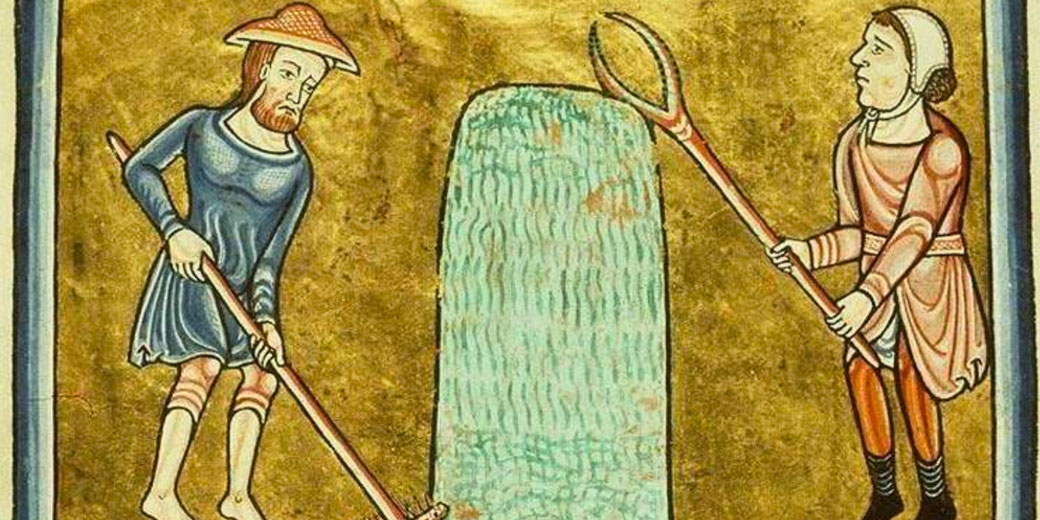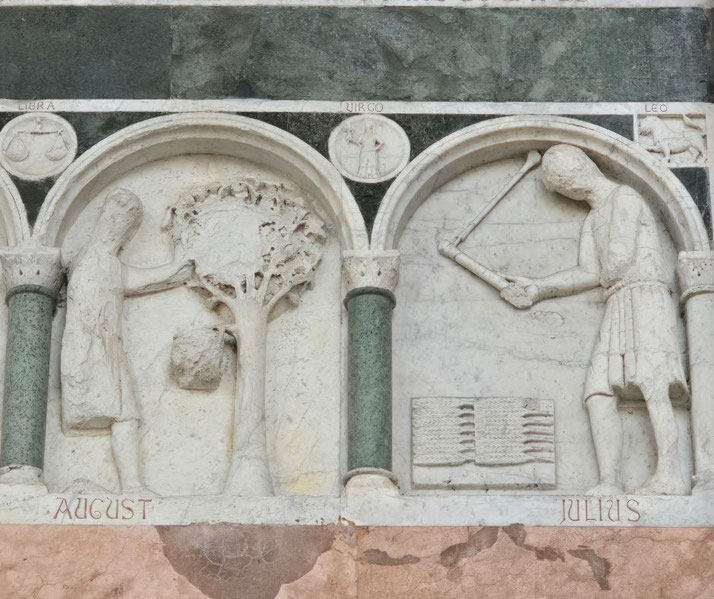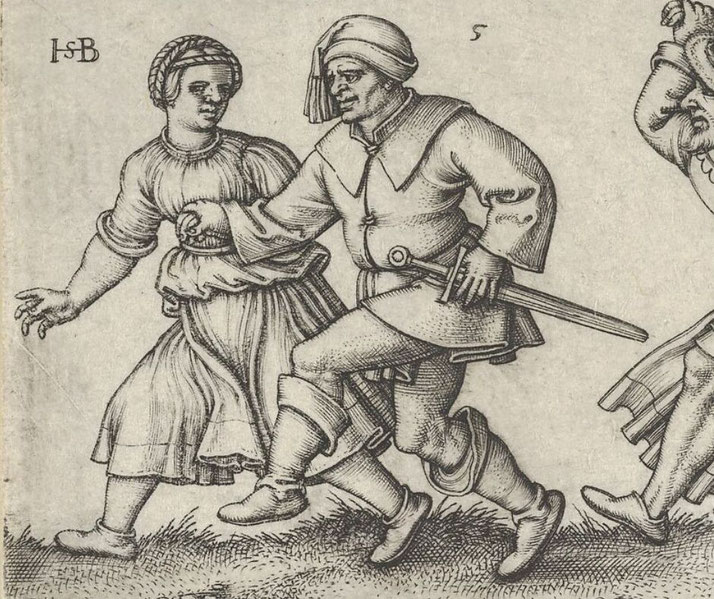What was it like being a medieval peasant?

For most people living in medieval Europe, life was governed by the seasons, local customs, and duties to lords or landowners. These people were known as peasants.
They made up the majority of the population. In many regions, the number could reach as high as 90 percent. Though life as a peasant was difficult, it was also set by local expectations and the need to work the land.
What made someone a 'peasant'?
A person was considered a peasant if they worked the land for a living but did not own it. The term covered several social ranks within the rural lower class.
At the bottom were the villeins, who were legally unfree peasants tied to the land and subject to their lord’s control.
They could not be sold individually and often held traditional rights that protected them from unfair treatment.
Below them were cottars and bordars, who held smaller plots and had fewer rights, and at the very bottom were landless labourers who relied on seasonal work and had little security.
Some peasants were freemen, but this status only applied to a small number. A freeman could rent land and had greater independence, though they still owed dues or labour to a landowner.
Under the feudal system, land was divided into manors controlled by lords or members of the Church.
In return for land use, peasants had to give part of their harvest, work without pay for several days a week, and follow strict rules.
The local lord or reeve kept records of duties and made sure people followed them.
A peasant’s rights and status were usually inherited, and it was very difficult to change one’s position in the social order.
This lack of ability to move up in society was one of the central features of medieval society.
Although the basic system existed throughout Europe, regional differences meant that peasants in England, France, or Italy might be governed by different manorial customs and legal codes.

The daily life of a medieval peasant
Peasant life was dominated by agricultural work. Most peasants rose at dawn and spent their days planting crops, pulling weeds, bringing in the harvest, or looking after animals.
Their year revolved around the agricultural calendar, which set sowing in the autumn, lambing in the spring, haymaking in the summer, and harvesting in late summer to early autumn.
Each task required cooperation from the village, and everyone was expected to contribute.
Women and children played an important role in agricultural and domestic duties, often working as hard as adult men.
Time was measured not by clocks, but by the rising sun, natural light, and church bells, and leisure was rare, though, sometimes,
Church feast days provided relief from labour. There could be over 80 such days each year, though many of them involved church services rather than full rest from work.
Tools were simple and made of wood and iron. The plough was essential for tilling the soil because it was usually pulled by oxen, while flails, sickles, and mattocks were used to bring in crops and to carry out basic farm upkeep.
Tasks were very tiring, and peasants had to work in all weather. In addition to their work on the land, peasants also gathered firewood, made ale, turned wool into thread, fixed fences, and looked after vegetable gardens.
In some cases, they were required to complete forced labour for their lord. This type of work was called corvée and meant working his land rather than their own.
For most, life was constant hard work just to get by.
What were their living conditions and homes like?
Peasant homes were small, dark, and smoky. Most had just one room with a thatched roof, wattle-and-daub walls, and a dirt floor.
The family shared the space with their animals, especially in winter, when extra warmth was needed.
Common animals kept indoors included chickens, pigs, and sometimes a cow.
There were no chimneys, so smoke from the central hearth filled the room before it escaped through a hole in the roof.
Furniture was very simple. Most houses had a wooden table, a few stools, and straw bedding.
The entire house usually measured only 20 to 30 square metres. In some areas, larger longhouses were built so that several families or animals could live together.
Lighting came from rushlights that had been dipped in fat, and hygiene was very poor.
Waste was thrown into the street or nearby cesspits, and water had to be carried from wells or streams.
Food was plain and repetitive. The peasant diet included mostly pottage, rough bread, ale, and vegetables.
Meat was rare, except on feast days. Salted fish, onions, and cabbage were common.
The ability to get preserved fish often depended on how much local trade there was or whether a village was close to the sea.
Hunger and sickness were constant dangers, and dirty living conditions made illness more likely.
Open hearths also caused many fires, which meant that thatched villages could be destroyed quickly when this happened.

Family life and being part of a medieval community
Even with these problems, family and community were very important parts of a peasant’s life.
Families often worked together in the fields and shared tasks, which included cooking, sewing, and caring for children.
Marriage was seen as a practical arrangement, and most peasants married young.
In many cases, they had to ask their lord for permission. Children helped the household as soon as they were able.
They often looked after animals or helped when they planted crops. Schooling was rare, and most peasants could not read or write.
Villages were close-knit groups and the local church was very important in peasant life.
It gave people religious support and held key events such as baptisms, weddings, and funerals.
Church tithes were also required. These usually took one-tenth of a peasant's produce.
Peasants joined in village fairs, saints’ days, and market days, which gave rare chances for fun and trade.
Seasonal events such as May Day or Lammas gave short breaks from daily life. The manor court handled local disagreements.
It made sure rules were followed and sorted out small problems. Peasants depended on one another for help.
They had to work together to do things like haymaking or repairing buildings.
Did medieval peasants have any rights?
Most peasants had very few legal rights, particularly those who were not free.
Villeins could not leave the manor without permission and had to pay the lord for nearly every major life event because marriage, inheritance and use of the village mill carried fees.
Lords had the right to demand labour, charge fines, and settle disputes through the manorial court.
Peasants had to seek approval before selling their land or even letting their children marry someone from another manor.
However, peasants were not entirely without protections. The manorial system included certain responsibilities on the part of the lord, which required the lord to protect the village from outside threats and to maintain justice.
Because manor courts met every few weeks, they were expected to resolve disputes and oversee local rules.
The Church also played a role, and it shaped expectations around fair treatment.
Over time, some peasants challenged their conditions. The most famous example was the Peasants’ Revolt in England in 1381, when thousands protested high taxes and serfdom.
Though the revolt failed in the short term, it showed growing unhappiness and helped lead to the slow decline of feudal labour obligations in later centuries.

The worst part of being a peasant in the Middle Ages
The most difficult part of being a medieval peasant was having no control over their lives.
A bad harvest could mean starvation. Disease could wipe out entire villages. Lords could raise demands, seize goods, or punish people without warning.
War often brought raiding armies that destroyed crops and homes. During conflicts like the Hundred Years’ War, peasants in both England and France suffered severe losses as soldiers pillaged villages and fields.
There were no safety nets, no state welfare, and little chance to escape the harsh cycle of poverty and labour.
Natural disasters, such as droughts, floods, or early frosts, added further misery.
The start of the Little Ice Age around 1300 brought colder, wetter conditions that worsened harvest failures.
The Black Death of the 14th century killed between one-third and one-half of Europe’s population, though many historians suggest it was likely closer to 30 to 40 percent.
Peasants were especially at risk due to poor living conditions. Despite this, the social system placed most of the burden for survival on their backs.
The feudal system ensured that wealth and privilege flowed upwards, while those at the bottom were expected to accept their place without question.
For the average medieval peasant, life was a constant battle against hardship, with few rewards.
What do you need help with?
Download ready-to-use digital learning resources
Copyright © History Skills 2014-2025.
Contact via email
With the exception of links to external sites, some historical sources and extracts from specific publications, all content on this website is copyrighted by History Skills. This content may not be copied, republished or redistributed without written permission from the website creator. Please use the Contact page to obtain relevant permission.





